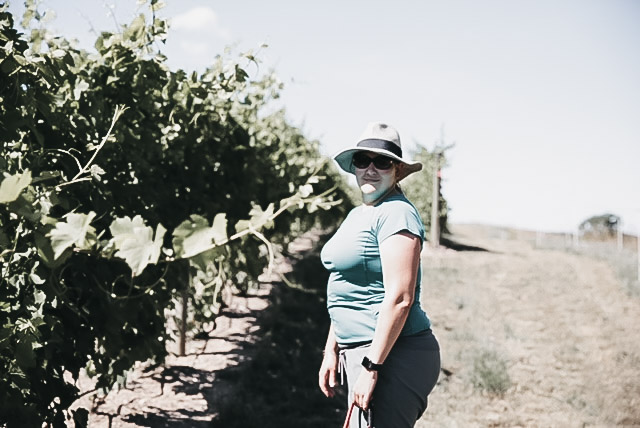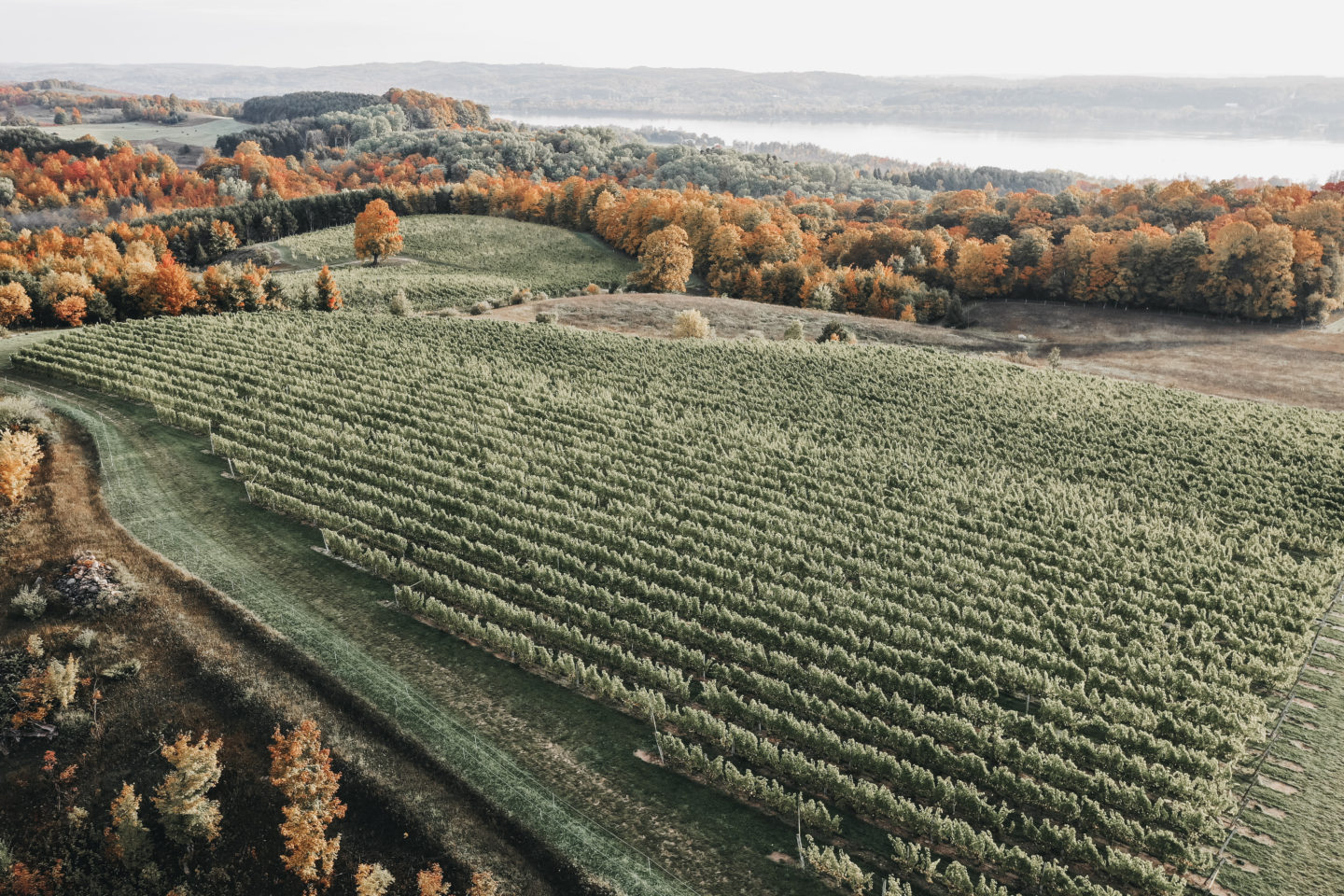
Emily, we like to kick things off with you telling us a little about yourself. Give us a little background on how you got into the wine industry.
I grew up in a family that really appreciated wine, and that engaged my interest early on. My time at Cornell, learning about plant science, gave me the chance to learn more about the production and hospitality sides of wine. I took a couple years off of school, working in insurance and realized I wanted to do something I loved for a living.
Meanwhile my parent’s interest in the Michigan wine industry had been growing and we decided that I would go to UC Davis for my Masters in Viticulture and Enology and they would start looking at Michigan vineyard land. In addition to the knowledge I had gained at grad school I was able to do internships in Willamette Valley and the Mosel, and work at tasting rooms in Michigan. But during grad school my mom had been diagnosed with Stage IV cancer and so there was a lot of pressure to make the family dream happen sooner rather than later.
We just jumped into planting a vineyard on Michigan’s Leelanau Peninsula as a family. In an ideal world my brother and I would have been able to gain more experience working for other operations, but the challenge of starting a vineyard and winery with all this theoretical knowledge and having to learn things like tractor maintenance on the fly has been fascinating. I wouldn’t change anything about my journey here.
Can you tell us more about what it’s like to be a viticulturist for Amoritas Vineyards? What is your day like?
Long Answer:
Because I’m both a viticulturist and one of the owners of a small business, there is a surprising amount of paperwork involved! That also means that I periodically have to pitch in the sales and retail side, so I have a lot of hybrid days, where I am doing a little bit of everything. In addition to that I keep track of growing season metrics (like tracking when each variety was in flowering), irrigation use, spray program, and going into harvest fruit quality.
I try to walk the vineyards at least once a day throughout the growing season, because there are things that one only observes if you take the time to slow down and really look. It also lets me get a good idea of how well our spray program and trellis management is working and lets me tweak plans to get the best fruit.
There’s always work to be done on the tractors. We try to do as much ourselves as we can, including the spraying and mowing, so that usually takes up at least an hour of the day and sometimes more. Any farmer knows that if you really need to use an implement it will find a way to break on you, and that can mean hours spent in a barn trying to fix a piece of equipment. So whenever possible we try to maintain equipment to avoid those future breakdowns.
A lot of what I do is communicating with our crew, our winemaker, and the rest of the family (my dad, brother and tasting room crew definitely pull double duty working in the vines most days) to make sure that everything is getting done in a timely manner. We have a very compact growing season in Michigan.
When all that is done I try to get some time working on the actual vines, managing vigor, suckers, and constantly weeding throughout the growing season (we try to minimize herbicide use). In the lead up to harvest we’re also dealing with maintaining deer fences, bird nets and of course actually harvesting the fruit.
Short Answer:
During harvest my days can be pretty hectic. I try to get at least one vineyard walk in, to really get a feel for where the fruit is, how it tastes and how it’s measuring in Brix and pH. If we’re pulling samples, that can take quite a while. I’m also one of the owners of the business so I often have to spend a few hours on paperwork and communication. During this COVID year I’ve been pitching in a lot to help on the retail side of the operation as well. There is usually at least an hour spent on tractor and vehicle maintenance, sometimes more. If we are harvesting I get out there and pick. But if we aren’t then I focus on pest deterrents like bird netting and our deer fence, as well as weeding and suckering vines.
A lot of people are still fairly unfamiliar with Michigan wine. I’ve been thoroughly impressed with the quality and varietals coming out of Leelanau lately; could you tell us a little more about the wine varietals you produce at Amoritas and why they work in Leelanau?
At Amoritas we grow Riesling, Chardonnay, Pinot Gris, Pinot Blanc, Auxerrois, and Muscat Ottonel. All white wines!
When planning we took trips through Alsace and the Mosel and wanted to honor the idea that great white wines can honor the place; they don’t have to be red! Though we are planting gamay, blaufrankisch, and saperavi next year so we will have some red in 2025.
Leelanau is a short, cool growing season with ample rainfall and periodically devastating cold in the winter. The effect of Lake Michigan is remarkable when it comes to saving us from the worst of winter – a combination of increased snow and lows that are often twenty degrees higher than surrounding areas. It’s a perfect little pocket of land for vinifiera varietals. It’s an ideal climate for producing fruity, clean, acid driven wines, and it’s amazing to see the complexity that can be found in white wines.
How would you describe the Amoritas winemaking style? What are the wines like for someone who hasn’t tried them before?
Our goal is to make wines that can be enjoyed with food and on their own. In the vineyard that means achieving clean fruit that can be picked early enough to preserve the acidity of the grapes.
We try to keep enough of that Leelanau intensity and acidity to bring out flavor in food, but retain enough fruit and polish in the wine that it’s a pleasure to drink on its own. We primarily work with stainless steel in order to keep the fruit and Charlie Schmidt is very skilled at bringing out the varietal character in each wine.
In single varietals, we want it to be a joyful representation of the best of that fruit, and in our blends we aim to create great complex wines meant for everyday consumption.
What advice do you have for other women wanting to get into the wine business?
The wine industry is all about mentorship. Organizations like Batonnage help women in wine connect with each other, and they are starting a mentorship program this year.
I also recommend reaching out to female winemakers or wine professionals you admire (in the non harvest/busy season) and seeing if they are open to answering some questions about how they got where they are.
And, to end it with something light and fun… What is your go-to wine at the moment, and why?
Whenever I have an excuse (like a day that ends in Y) I’ve been popping open some of our 2019 Pipe Dream sparkling Riesling, because its bubbly fun with all this green apple intensity, and it is just fun to drink!

